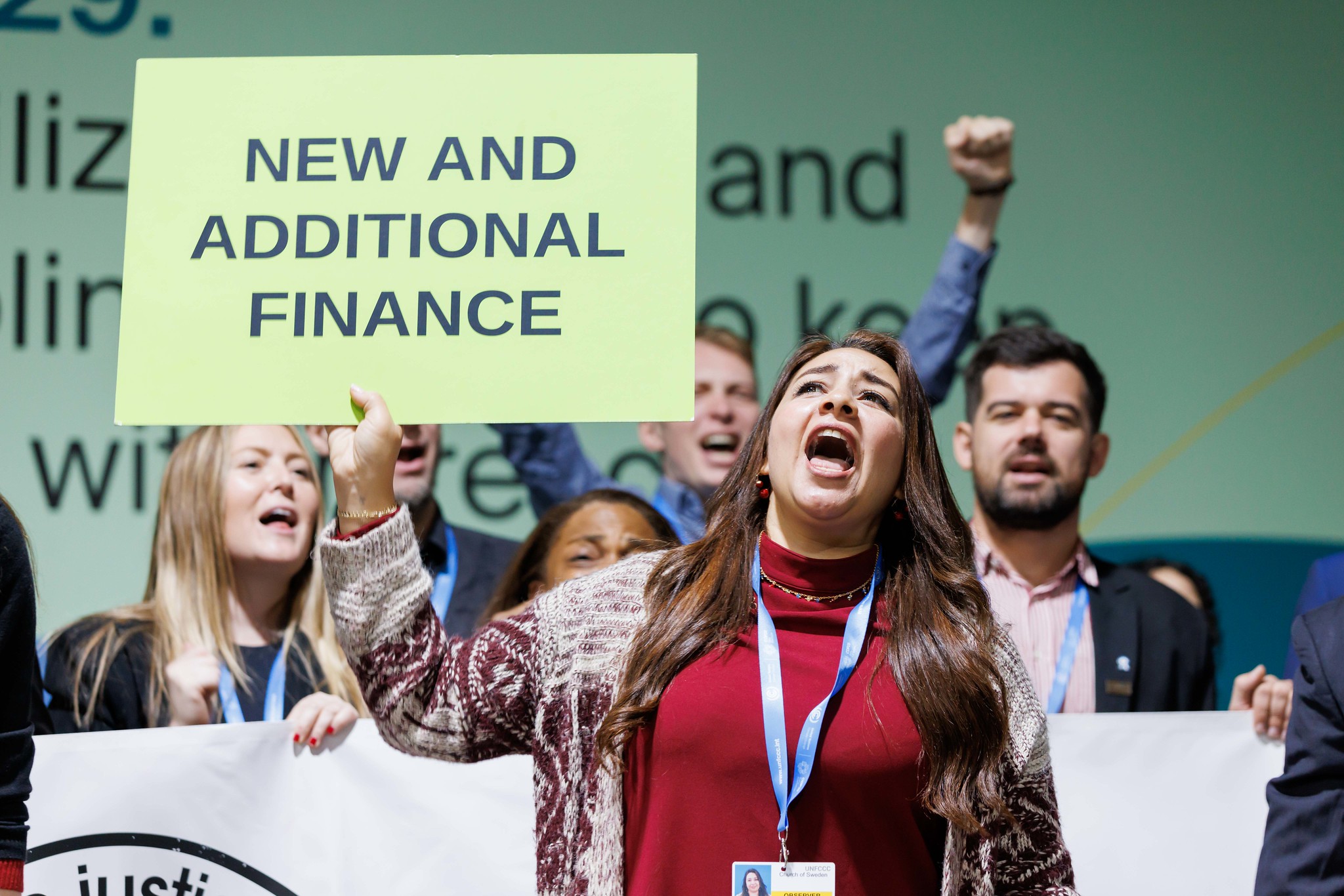 COP29 Civil Society Actions Photo: UN Climate Change - Kamran Guliyev
COP29 Civil Society Actions Photo: UN Climate Change - Kamran Guliyev
We spoke with Michael Kakande, founder of Resilient40, about the New Collective Quantified Goal (NCQG) negotiations, the demands from the Global South, and the role the water sector should play in the finance discussions.
At COP29, there are only four days left to settle the global climate finance debate: who funds it, who benefits, and how much is enough. Negotiators, embroiled in intense discussions, are now in a race against time to finalize the New Collective Quantified Goal (NCQG). The goal will direct finance toward adaptation, resilience-building, and mitigation, especially in the Global South.
Africa, with its burgeoning youth population and staggering external debt faces a mounting crisis as it spends 65% of GDP on debt servicing.
Michael Kakande is the founder of Resilient40, a pan-African youth network for climate justice, which has been providing regular submissions to the NCQG negotiations. From grassroots mobilization to advocating at international forums, Kakande champions a vision of climate finance that prioritizes accessibility, justice, and community-led solutions.
We spoke with Kakande about the NCQG negotiations, the demands from the Global South, and the role the water sector should play in the finance discussions.
This interview has been edited for length and clarity.
Q: Nearly nine years ago, at COP21, Parties to the UNFCCC agreed to establish a new collective quantified goal on climate finance before 2025 to support developing countries. These costs are now in the trillions. What’s at stake as negotiators approach the NCQG deadline?
Over the past three years, there have been 11 technical expert dialogues, three meetings of the ad-hoc work programme, two high-level ministerial meetings, dozens of submissions and hundreds of pages of reports summarizing discussions.
All of that work has brought us here, to the moment of truth. The NCQG must be established prior to 2025 and we only have four days left to make that deadline. The goal must include minimum allocations for mitigation, adaptation and Loss and Damage, to ensure developing countries have finance for all three pillars of climate action.
Q: We’re seeing real-time examples of climate impacts, like record-breaking droughts and floods. How should the NCQG address these crises?
During the second day of COP 29, Colombia declared a state of emergency as torrential rains hit the country, displacing 93,000 people. Costa Rica and Honduras have also declared national emergencies, due to flooding from Tropical Storm Sara. Meanwhile, southern Africa is in the midst of its worst drought in a century leaving 27 million people food insecure and 21 million children malnourished across the region.
There is so much that we want as the Global South, however there is still a lot of back and forth. We clearly put our position as Africa and what we really envision the NCQG to look like: specifically, what it should be and who it should be working for. We need it to focus on accessibility. In the past there have been so many other financing structures, but the challenge has always been with access.
[Our group of Global South countries] feels strongly it should be grant-based and trickling down to communities at the front lines. We are pushing for it not to accumulate on the debt burdens that we have. It needs to help build the resilience that we need in our communities.
Such initiatives should really look to globalization and a common understanding of the situation. Whereas in the past, the existing instruments have been more or less focused on a region like Africa or the Global South. But [climate change] is affecting us all. I look forward to this being an opportunity for the global community to build the resilience that we need.
Q: What role should the water sector play in these negotiations?
When you’re talking about resilience, water cuts across all sectors – for example, within our food systems that we need up and running. We should use this as an opportunity to lobby more as the water community to help build resilience.
Only water can provide the solution because in the context of Africa most agriculture is rain-fed. And in such contexts where our weather patterns have shifted, water resources through irrigation can help us with the resilience that we need for food security.
As a sector, we need to clearly have a stand within the NCQG and the role that we play in addressing climate emergencies and with adaptation and mitigation strategies.
Q: You’re here as a representative of a pan-African youth network. Why is it important for young people to engage with climate finance?
We are a global community that is very young. Less than 3 percent of the world’s financing goes to youth movements and youth organizations. They are the people within the frontline communities, running the organizations, so it’s wise for us to lobby for funds so that we can build the resilience within the local communities where we work. We are blessed to have young, innovative young people on the continent, so we are trying to tap into that as a resource.
Photo shows “COP29 Civil Society Action” Credit: UN Climate Change – Kamran Guliyev